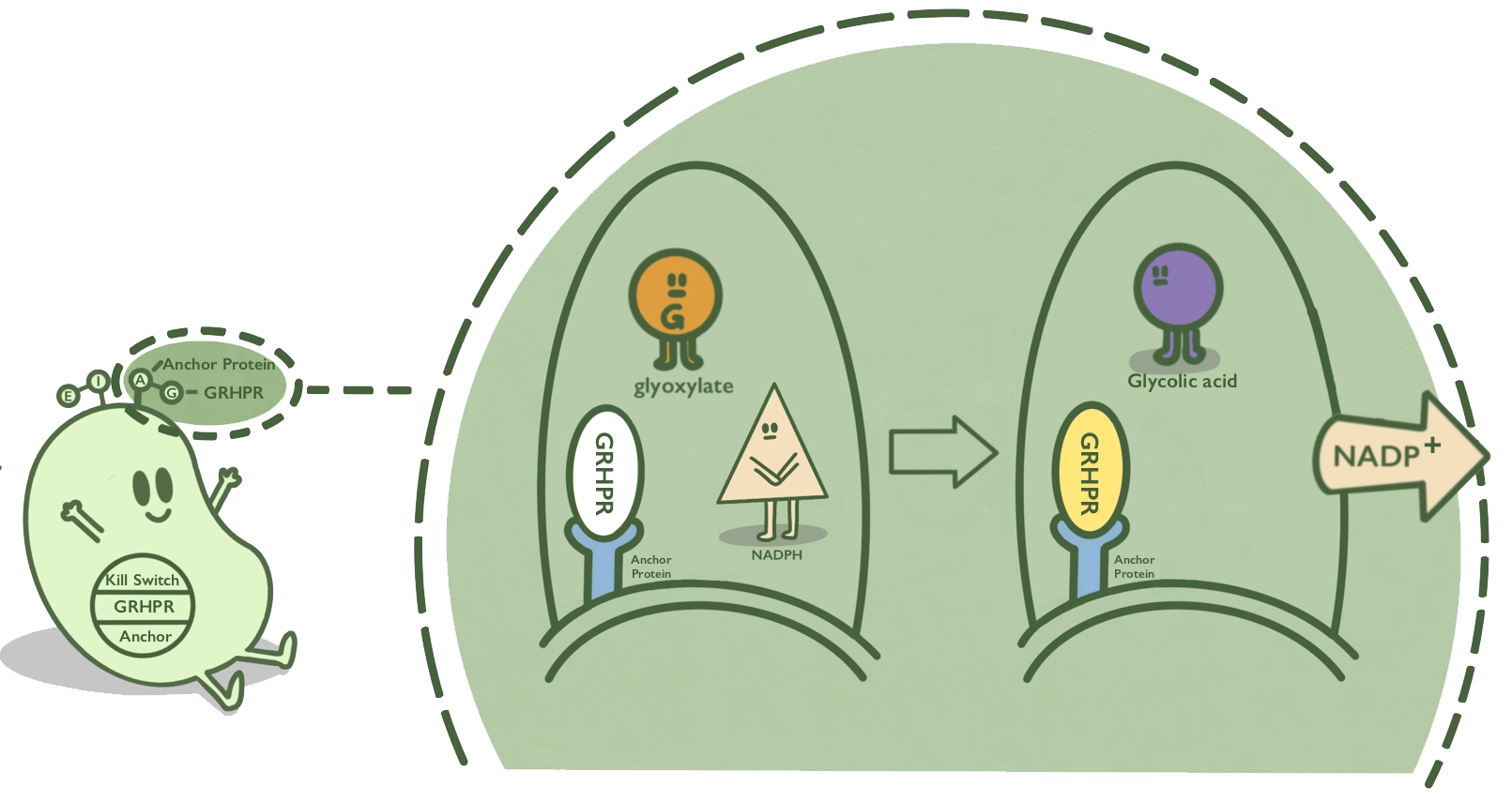Difference between revisions of "Part:BBa K3332014"
Huangzinuo (Talk | contribs) m |
AnnaTaylor (Talk | contribs) (→Usage) |
||
| Line 28: | Line 28: | ||
<html> | <html> | ||
<figure> | <figure> | ||
| − | <img src="https://2020.igem.org/wiki/images/2/21/T--XMU-China--XMU-China_2020-J23100_B0034_grhpr-aidA_B0015.png" width=" | + | <img src="https://2020.igem.org/wiki/images/2/21/T--XMU-China--XMU-China_2020-J23100_B0034_grhpr-aidA_B0015.png" width="35%" style="float:center"> |
<figcaption> | <figcaption> | ||
<p style="font-size:1rem"> | <p style="font-size:1rem"> | ||
Latest revision as of 22:58, 27 October 2020
GRHPR-AIDA
We anchor GRHPR protein onto membranes through AIDA to catalyze the reaction of reducing glyoxalic acid and consuming NADPH. We use BBa_K880005 to construct the expression system and anchor GRHPR on the surface of E.coli.
Biology
AIDA is an anchor protein from E. coli, which has been widely used in cell-surface display. GRHPR, a glyoxylate reductase from human liver, can reduce glyoxylic acid when NADPH is used as cofactor.
GRHPR is fused at C terminal with AIDA so that GRHPR can be displayed on the surface of E. coli.[1][2]

- Fig 1. mechanism
Usage
Here, we used BBa_K880005 to construct the expression system and demonstrated the effect of GRHPR-AIDA on the surface of E. coli. We obtained the composite part BBa_K3332059 and transformed the constructed plasmid into E. coli BL21 (DE3) to verify its expression. The positive clones were cultivated.

- Fig 2. Gene circuit of GRHPR-AIDA.
Characterization
1.Identification
After receiving the synthesized DNA, restriction digestion was done to certify that the plasmid was correct, and the experimental results were shown in figure 3.

- Fig 3.DNA gel electrophoresis of restriction digest products of GRHPR-AIDA-pSB1C3 (Xbal I & Pst I sites)
2.Ability of consuming NADPH
We mixed glyoxylic acid solution, NADPH solution and bacteria solution carrying GRHPR-AIDA. Then, we immediately measured OD340 changes. TECAN® Infinite M200 Pro was used to detect OD340 . And when NADPH is consumed, OD340 declines.
We successfully got OD340-Time curves of GRHPR fused with 4 types of anchor protein. When using bacteria carrying GRHPR-AIDA, we could see OD340 decreased as the reaction went on. However, by using bacteria carrying J23100-RBS (BBa_K880005) and GRHPR-Histag as control, we could also find that the slopes of these three curves are similar. The results show that our fusion protein GRHPR-AIDA do not work well. The result is shown in figure 4.

- Fig 4. OD340-Time curves of GRHPR fused with 4 types of anchor protein
References
- ↑ Rumsby G, Cregeen D P. Identification and expression of a cDNA for human hydroxypyruvate/glyoxylate reductase[J]. Biochimica et Biophysica Acta (BBA) - Gene Structure and Expression, 1999, 1446(3): 383-388.
- ↑ http://2016.igem.org/Team:TJUSLS_China
Sequence and Features
- 10COMPATIBLE WITH RFC[10]
- 12COMPATIBLE WITH RFC[12]
- 21INCOMPATIBLE WITH RFC[21]Illegal BamHI site found at 2264
- 23COMPATIBLE WITH RFC[23]
- 25INCOMPATIBLE WITH RFC[25]Illegal AgeI site found at 547
- 1000COMPATIBLE WITH RFC[1000]
